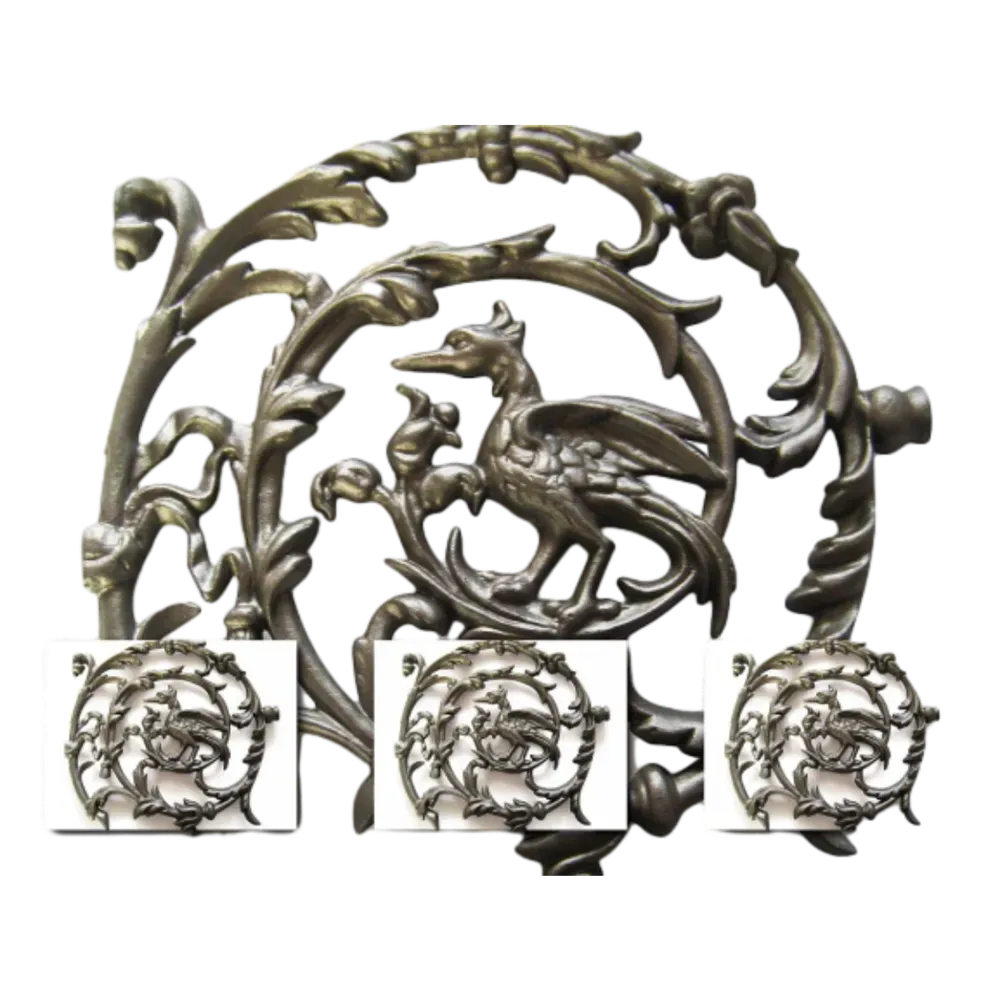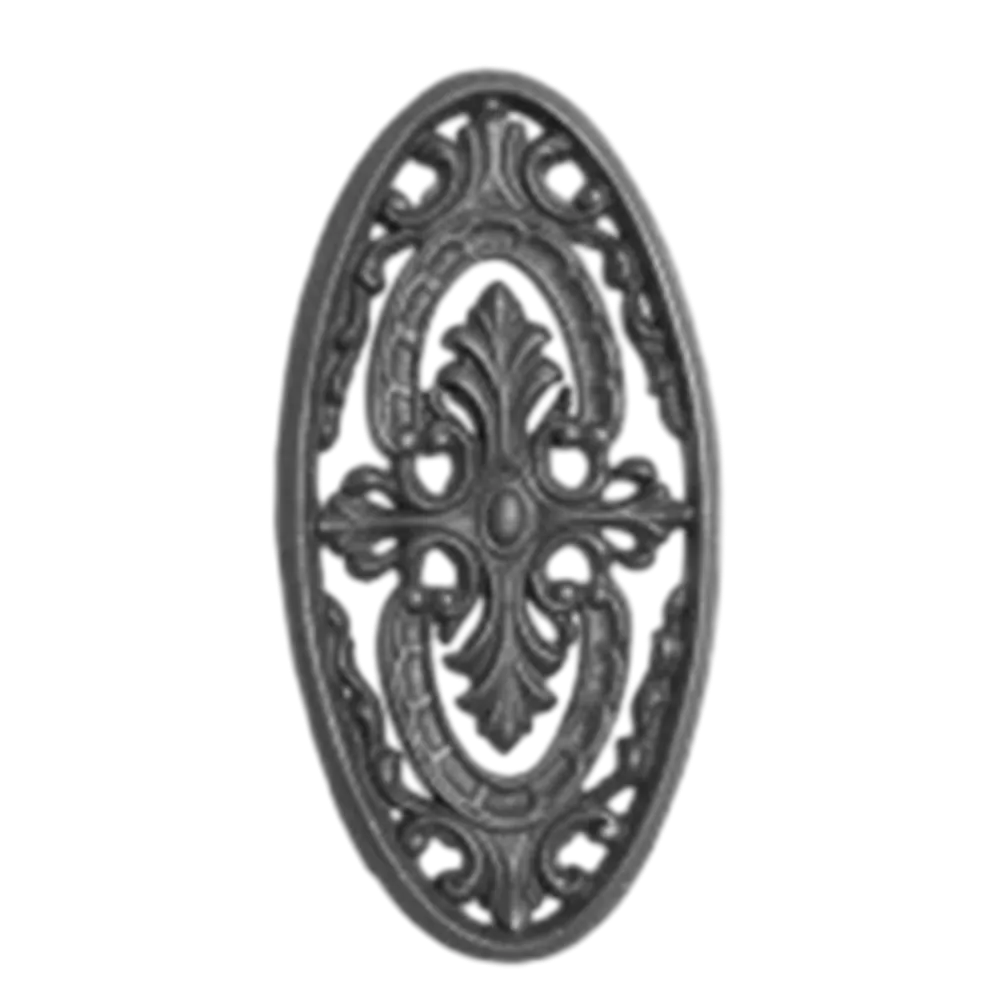ફેબ્રુવારી . 17, 2025 13:03
Back to list
Decorative Finals
Wrought iron is a metal that has thrived through the ages due to its incredible durability and charm. As such, many people ask whether wrought iron rusts and how to best manage this. Understanding both the properties of wrought iron and how to maintain it can ensure it serves you well for generations, proving itself to be an outstanding material for various applications.
When considering products for rust prevention, certain oil-based products and waxes can provide an additional layer of protection. These create a seal over the metal, preventing moisture and oxygen from reaching the iron. Applying these products occasionally, particularly in areas where the paint is thin or absent, can significantly enhance rust resistance. If rust does appear, it’s important to address it promptly. Small spots can often be removed with sandpaper or a wire brush, followed by repainting the area to restore the protective layer. For more substantial rust damage, commercial rust removers might be necessary. These chemicals can effectively penetrate and eliminate rust, but care must be taken to follow instructions closely to prevent damage to the metal beneath. Another approach is employing modern technology with professional-grade rust converters. These products chemically convert iron oxide into a more stable compound, halting the rusting process and preventing future corrosion, making them invaluable for extensive restorations. In summary, while wrought iron is not completely rust-proof, it showcases considerable rust resistance, especially when correctly maintained. Its fractal beauty and strength make it a favored material, even in contemporary settings. Employing proactive maintenance through regular cleaning, painting, and the use of preventative products ensures the longevity of wrought iron structures and items. For those invested in historical preservation or simply enamored by its timeless elegance, understanding the care requirements for wrought iron is crucial. Such efforts not only maintain the structural integrity but also preserve its historical and aesthetic value, assuring that wrought iron continues to be a beloved choice in architectural design and home decor.


When considering products for rust prevention, certain oil-based products and waxes can provide an additional layer of protection. These create a seal over the metal, preventing moisture and oxygen from reaching the iron. Applying these products occasionally, particularly in areas where the paint is thin or absent, can significantly enhance rust resistance. If rust does appear, it’s important to address it promptly. Small spots can often be removed with sandpaper or a wire brush, followed by repainting the area to restore the protective layer. For more substantial rust damage, commercial rust removers might be necessary. These chemicals can effectively penetrate and eliminate rust, but care must be taken to follow instructions closely to prevent damage to the metal beneath. Another approach is employing modern technology with professional-grade rust converters. These products chemically convert iron oxide into a more stable compound, halting the rusting process and preventing future corrosion, making them invaluable for extensive restorations. In summary, while wrought iron is not completely rust-proof, it showcases considerable rust resistance, especially when correctly maintained. Its fractal beauty and strength make it a favored material, even in contemporary settings. Employing proactive maintenance through regular cleaning, painting, and the use of preventative products ensures the longevity of wrought iron structures and items. For those invested in historical preservation or simply enamored by its timeless elegance, understanding the care requirements for wrought iron is crucial. Such efforts not only maintain the structural integrity but also preserve its historical and aesthetic value, assuring that wrought iron continues to be a beloved choice in architectural design and home decor.
Prev:
Latest news
-
Wrought Iron Components: Timeless Elegance and Structural StrengthNewsJul.28,2025
-
Window Hardware Essentials: Rollers, Handles, and Locking SolutionsNewsJul.28,2025
-
Small Agricultural Processing Machines: Corn Threshers, Cassava Chippers, Grain Peelers & Chaff CuttersNewsJul.28,2025
-
Sliding Rollers: Smooth, Silent, and Built to LastNewsJul.28,2025
-
Cast Iron Stoves: Timeless Heating with Modern EfficiencyNewsJul.28,2025
-
Cast Iron Pipe and Fitting: Durable, Fire-Resistant Solutions for Plumbing and DrainageNewsJul.28,2025
-
 Wrought Iron Components: Timeless Elegance and Structural StrengthJul-28-2025Wrought Iron Components: Timeless Elegance and Structural Strength
Wrought Iron Components: Timeless Elegance and Structural StrengthJul-28-2025Wrought Iron Components: Timeless Elegance and Structural Strength -
 Window Hardware Essentials: Rollers, Handles, and Locking SolutionsJul-28-2025Window Hardware Essentials: Rollers, Handles, and Locking Solutions
Window Hardware Essentials: Rollers, Handles, and Locking SolutionsJul-28-2025Window Hardware Essentials: Rollers, Handles, and Locking Solutions -
 Small Agricultural Processing Machines: Corn Threshers, Cassava Chippers, Grain Peelers & Chaff CuttersJul-28-2025Small Agricultural Processing Machines: Corn Threshers, Cassava Chippers, Grain Peelers & Chaff Cutters
Small Agricultural Processing Machines: Corn Threshers, Cassava Chippers, Grain Peelers & Chaff CuttersJul-28-2025Small Agricultural Processing Machines: Corn Threshers, Cassava Chippers, Grain Peelers & Chaff Cutters












